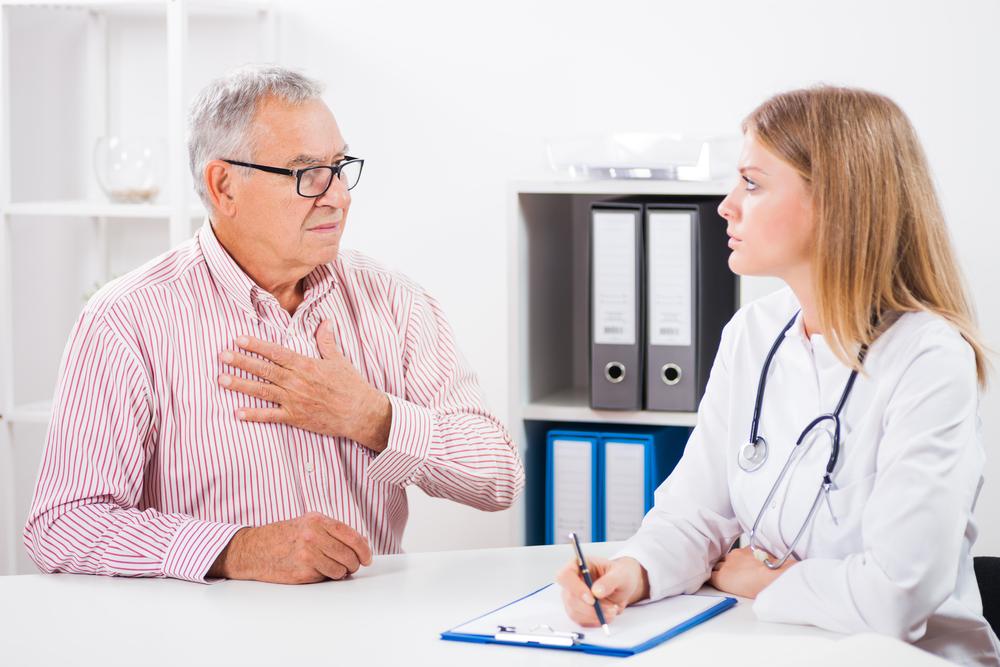Types Of Chest Pain And Their Treatments
Types of chest pain and their treatments
The first thing that chest pain, especially upper left chest pain, brings into the minds of many is a heart attack. Well, it can be a symptom of a heart attack, but there are a plethora of other possible causes as well. It can be felt anywhere from the neck down to the upper abdomen and can be a dull, sharp, stabbing, burning, aching, or a crushing sensation, depending on the cause.

Chest pain should never be ignored, and knowing the following facts about it can prevent a number of associated health problems.
What are the common causes of chest pain?
- Injured ribs : An injury in the ribs, including breaks, fractures, and bruises, is one of the causal factors of chest pain.
- Muscle strain : Muscle strain is another possible reason for chest pain. If the pain worsens with activity, it might mean that there is inflammation in the muscles and tendons around the ribs.
- Peptic ulcers : Peptic ulcers are sores in the stomach lining that usually don’t cause intense pain. However, they do cause discomfort in the chest that feels like chest pain.
- Asthma : This condition characterized by inflammation of the airways causes chest pain, along with other symptoms, such as coughing, wheezing, and shortness of breath.
- Gastroesophageal reflux disease (GERD) : GERD is a condition wherein the contents of the stomach move back into the throat, causing a burning or painful sensation in the chest and a sour taste in the mouth.
- Collapsed lung : Due to the air build up in the space between the ribs and the lungs, a lung can collapse. Those with a collapsed lung experience chest pain while breathing and feel tired and have a rapid heart rate.
- Esophageal hypersensitivity : This condition refers to a change in pressure in the food pipe or the presence of acid, which results in chest pain.
- Hiatal hernia : When a part of the stomach pushes the chest, the condition is termed as a hiatal hernia. Those suffering from it often experience heartburn and chest pain after eating.
- Tuberculosis : A bad cough, pain in the chest, and coughing up blood are the symptoms that tuberculosis bacteria growing in the lungs can cause.
- Mitral valve prolapse : This is when a valve in the heart is unable to close fully. This causes symptoms such as dizziness, palpitations, and chest pain in a person.
- Heart attack : Chest pain is one of the symptoms of heart attack, and other symptoms include pain in the jaw, neck, back, weakness, pain in the arms and shoulders, and shortness of breath.
- Angina : Chest pain caused by angina is a squeezing pain, along with discomfort in the back, neck, and shoulders. It is a symptom of a coronary artery disease.
When should one see a doctor?
- If the right side chest pain or pain anywhere in the chest comes on suddenly, one should consult a doctor immediately.
- If the pain doesn’t go away even after taking anti-inflammatory medications.
- If the pain spreads to the top jaw, back, and the left arm.
- If the pain is accompanied by rapid breathing and a rapid heartbeat.
What are the types of diagnostic tests available for diagnosing chest pain?
- Electrocardiogram (ECG or EKG)
- Blood tests
- Chest X-ray
- Echocardiogram
- MRI
- Stress tests
- Angiogram
What are the types of chest pain?
Based on the causes and symptoms, chest pain is divided into the following types:
- Heart-related
- Stress-related
- Broken ribs
- High blood pressure-related
- Muscle or nerve disorder
- Chest pain related to bone problems
- Psychological chest pain
How is chest pain treated?
- The treatment is subject to the cause of the chest pain.
- If the pain is due to acid reflux, over-the-counter antacids can help.
- To treat chest pain due to stress, stress management techniques are advised to patients.
- Patients are advised to take ample rest and avoid certain activities that cause muscle strain and chest pain.
- A combination of medications and invasive procedures is used for treating cardiac chest pain.
- Surgical intervention is usually required for treating chest pain caused by a collapsed lung.
Disclaimer:
The content provided on our blog site traverses numerous categories, offering readers valuable and practical information. Readers can use the editorial team’s research and data to gain more insights into their topics of interest. However, they are requested not to treat the articles as conclusive. The website team cannot be held responsible for differences in data or inaccuracies found across other platforms. Please also note that the site might also miss out on various schemes and offers available that the readers may find more beneficial than the ones we cover.

